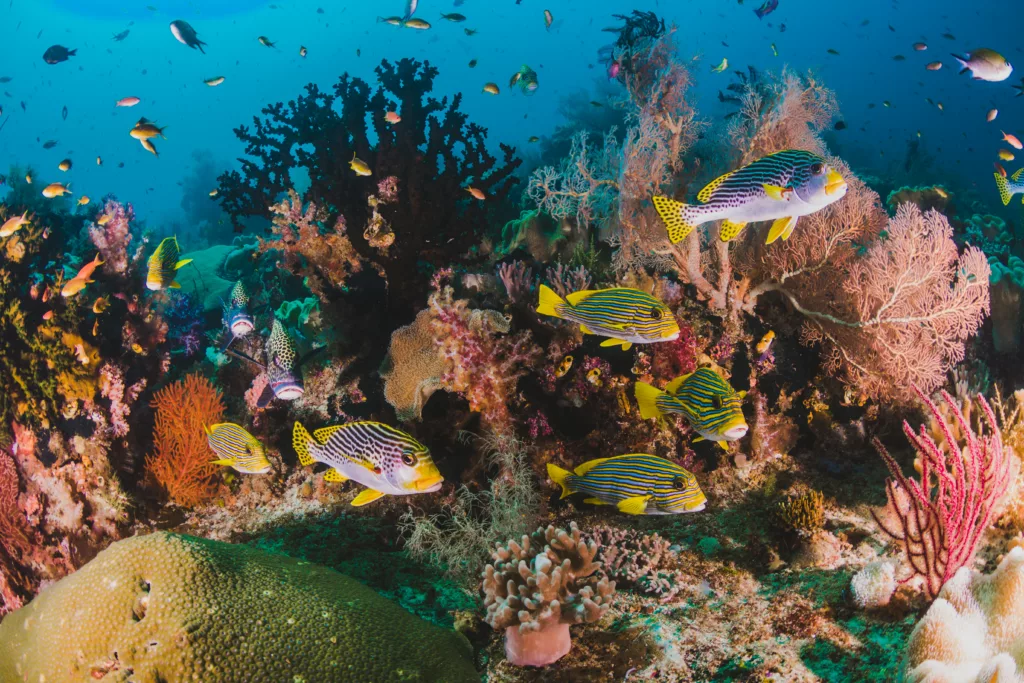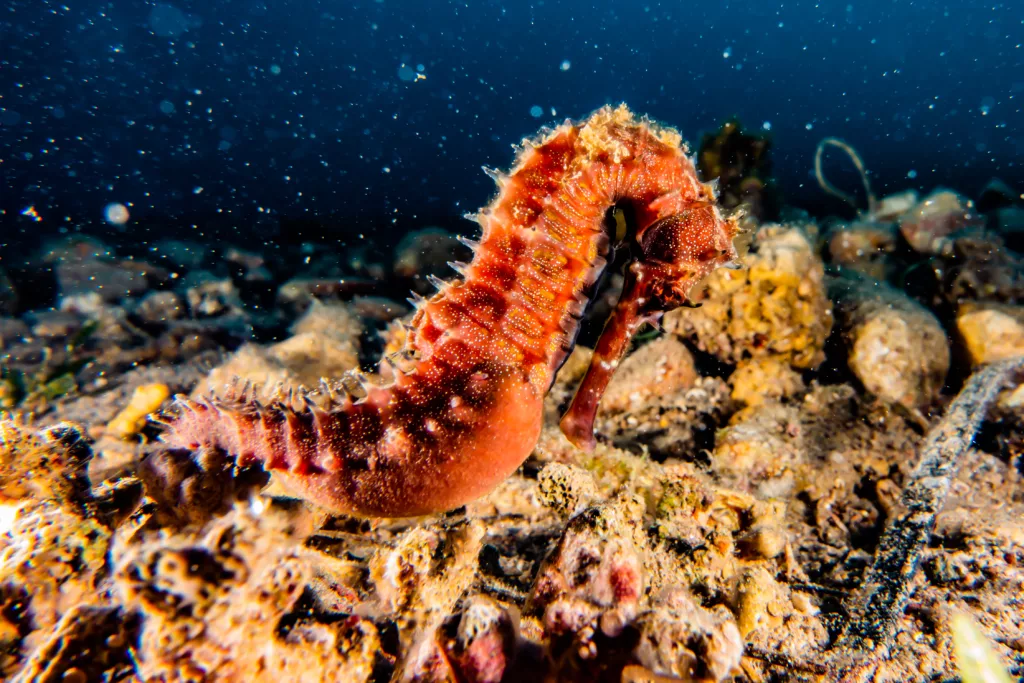When it comes to plunging into the captivating depths of the ocean, communication becomes a lifeline. That’s where mastering the art of scuba diving hand signals becomes not only useful but essential for every underwater adventurer. Diving in the pristine waters of Bali or any diving hotspot around the globe, understanding these silent messages can make the difference between a memorable dive and a challenging situation. This guide delves into the crucial world of hand signals in diving, ensuring every dive you undertake is as safe as it is thrilling.
Why Hand Signals are a Diver’s Best Friend
Underwater, where the spoken word is rendered powerless, the art of hand signaling emerges as an indispensable communication bridge between divers. These signals, rich in meaning and simplicity, act as lifelines in the soundless depths of the ocean. Hand signals in diving transcend the basic exchange of information and evolve into a complex language that includes alerts about air reserves, navigation directions, and warnings regarding environmental conditions or approaching wildlife. This linguistics of gestures ensures that divers can share their intent, concerns, and exhilarations without uttering a single word. In places like the coral-covered waters of Bali, where currents and visibility can shift unexpectedly, the ability to communicate clearly and promptly can be as crucial as the diving equipment itself. Moreover, adeptness in hand signals can greatly enrich the diving experience, enabling divers to point out a rare fish or an unseen underwater cave to their companions, thereby deepening the shared experience of exploring the aquatic wilderness.
Basic Hand Signals Every Scuba Diver Must Master

Embarking on the adventure of scuba diving requires the mastery of a fundamental lexicon of hand signals that are pivotal for ensuring safety and coherence in underwater communication. Key signals such as ‘OK’, ‘Problem’, ‘Ascend’, and ‘Descend’ are part of this essential language toolkit for divers. The ‘OK’ signal, a clear circular gesture connecting thumb and forefinger, serves as a critical checkpoint used multiple times during a dive to confirm well-being and readiness to continue. Meanwhile, distress signals like ‘Low Air’ or ‘Out of Air’, indicated by slashing movements across the throat or clenching the neck, can dramatically impact the outcome of a dive by ensuring timely and precise responses to potential threats. Training to use these signals naturally and effectively becomes a backbone of safe diving practices. As divers commit this visual vocabulary to memory, each gesture becomes a second language, allowing them to communicate robustly in environments where traditional speech would be swept away by the currents.
Advanced Signals for Handling Emergencies

As divers progress beyond the basics, their communicative repertoire needs to expand to include signals that can decisively handle emergencies. Signals for ‘Emergency Ascent,’ ‘Entanglement,’ or ‘Need Assistance’ are not merely additions to their signaling toolkit—these are crucial lifelines that can govern the thin line between a safe return and a diving accident. Knowing the signal for ‘Emergency Ascent’, often a brisk upward motion with the arm, enables swift coordination and response should a rapid return to the surface become necessary. Similarly, a signal for ‘Entanglement’—mimicking the wrapping of rope around one’s arm—alerts nearby divers to a predicament requiring immediate attention and potential help. These advanced hand signals are especially vital in treacherous dive sites where natural beauty is matched by potential dangers. Enhanced knowledge and use of these signals can empower a diving group to face unexpected challenges with calm and efficiency, ensuring that every dive remains an exhilarating adventure rather than an unforeseen peril.
Learning and Practicing Diving Signals

The pathway to becoming an adept scuba diver involves not only learning but ingraining the hand signals into the muscle memory through relentless practice. This frequent repetition is best carried out in controlled environments such as diving schools or during supervised training sessions, preferably in renowned diving destinations like Bali, which is celebrated not only for its breathtaking marine life but also for its robust diving instruction infrastructure. Engaging regularly with these signals enhances their automatic recall under water, where every second count. This rigorous preparation serves to embed each gesture deeply into the diver’s instinctual response system, turning complex signals into simple, almost reflexive, communications. Such diligent preparation builds a foundation of safety and confidence that enables divers to navigate the underwater world with assurance and poise, making the most of their exploratory missions into the azure depths.
Respecting Local Diving Cultures and Protocols
Scuba diving is a globally embraced adventure that comes with a responsibility to honor the local diving etiquettes and protocols of the host community. While core hand signals remain largely universal, regional variations may exist and acknowledging these nuances is a sign of respect and integration into the local culture. For instance, diving in regions like Bali might expose divers to slightly altered signals or additional local practices that are integral to the safety and sustainability of diving activities in the area. It’s essential for international divers to participate actively in local briefings and communicate openly with local guides or experienced divers. These actions not only demonstrate respect but also enhance the safety and enjoyment of their diving excursions. By embracing local customs and practices, divers enrich their experience and contribute to a culture of mutual respect and understanding within the global diving community.
Concluding Dive: Navigating the Depths Safely with Proper Signaling
In the vast and mesmerizing world of scuba diving, knowing the right hand signals isn’t just about being communicative — it’s about being safe and competent. From the clear, turquoise waters of Bali to the distant shores of other world-renowned dive sites, these signals form the unspoken words that bridge divers with safety and mutual understanding. As you plan your underwater adventures, remember that these hand gestures can vastly enhance your diving experience, ensuring that each dive is as safe as it is spectacular. Dive deep, signal well, and treasure the serene beauty of the underwater world.


As an avid diving enthusiast, I found this blog post highly informative. I particularly enjoyed the attention given to the importance of regional variations in diving signals, stressing the importance of respect and safety when diving in various locations.
I never knew that mastering hand signals could make such a huge difference in diving! It’s amazing how something so simple can be so crucial.
Hi Wong Liying, thanks for sharing your thoughts! We’re glad you found the article informative and insightful. At Pebble & Fins, we believe that mastering hand signals is indeed a crucial aspect of safe and enjoyable diving. Our resort in Bali offers dedicated training facilities for our local staff and surrounding areas, focusing on providing job opportunities and education. Revisit us from time to time as we continue to make a positive impact in the community. If you have any questions or would like to learn more about our hand signal courses, feel free to reach out to us at [email protected] or +62 857 3891 8262.
I’ve always been fascinated by the world of scuba diving. This article really highlights the importance of hand signals in ensuring a safe and enjoyable dive.
Thank you for sharing your thoughts on the importance of hand signals in scuba diving! We’re glad to hear that our article resonated with you. At Pebble and Fins, we believe that effective communication is key to a safe and enjoyable dive experience. That’s why we’re committed to providing top-notch training facilities and expert guidance for our guests. If you have any questions or would like to learn more about our diving courses, please don’t hesitate to contact us at [email protected] or +62 857 3891 8262. We’d be happy to hear from you!
I’ve had some experience with diving, but I never knew about these specific hand signals. Thanks for sharing this knowledge! It’s definitely something I’ll keep in mind for my next dive.
Hi Tan Wei, thanks for reaching out and sharing your experience! We’re glad you found the information helpful. Remember that our resort is committed to making a positive impact in Bali through education and job opportunities. When you visit us, not only will you have an unforgettable diving experience, but you’ll also be supporting local initiatives that benefit the community. Feel free to contact us at [email protected] or +62 857 3891 8262 for more information. We look forward to seeing you soon!